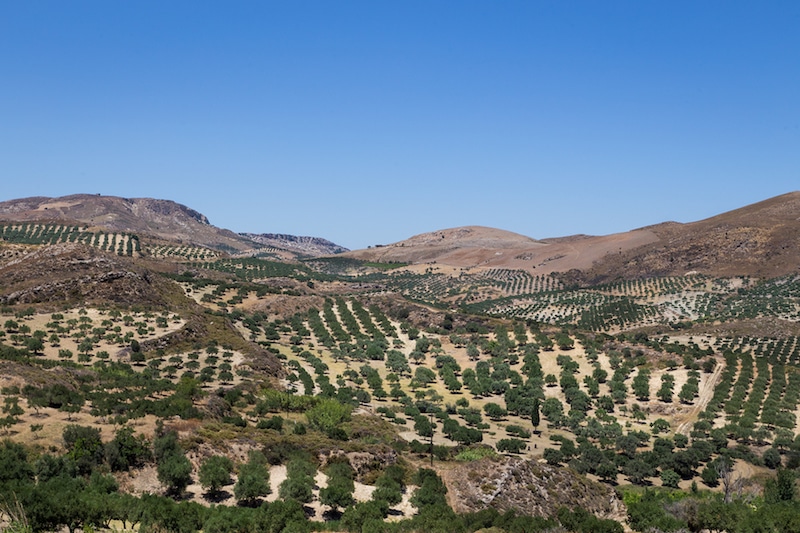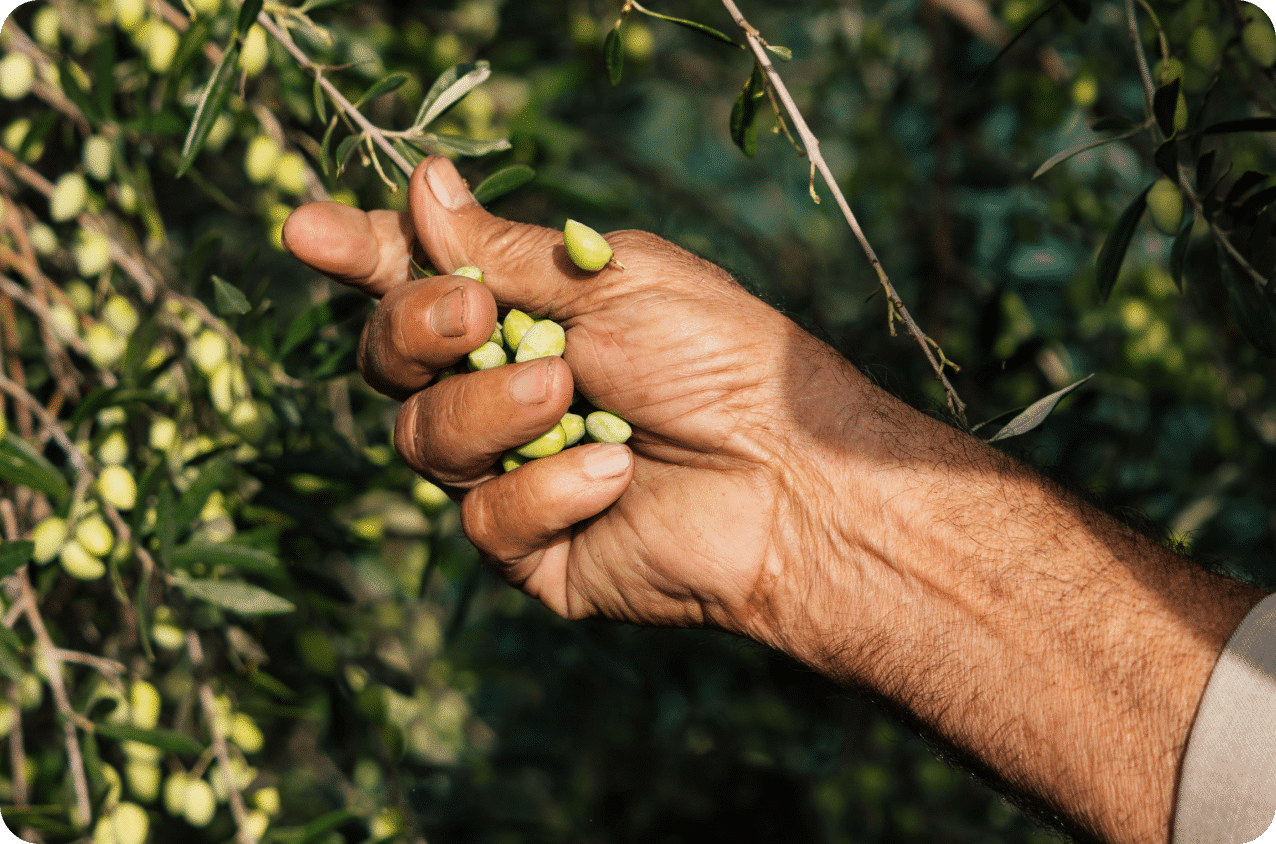Gkazas is traditionally produced into organic olive oil. It may not be the easiest method, but when it comes to making good olive oil, there’s really no other way. We take pride in our traditional process. That’s why we’re happy to tell you more about it—and compare it to modern production methods.
Olive groves for organic olive oil
Traditional olive oil production is mostly found in dry, mountainous regions—like Crete, where our olive groves are located. One key feature of traditional farming is the relatively large distance between the trees: about 5 meters. Without irrigation or fertilizers, an olive tree needs plenty of space to grow its fruit. Harvesting is also done the traditional way: the olives are gently knocked from the trees and caught in nets. The use of machinery is nearly impossible, as the trunks are often too thick and the branches spread in all directions.
Yields in traditional farming range between 2 and 5 tons of olives per hectare (one hectare is about two football fields). From that, you get roughly a quarter in olive oil. However, it can take up to 15 years for trees to reach full production. Traditional olive groves are also usually quite small. On Crete, the average size is just 1.5 hectares. So it may not come as a surprise that fewer and fewer traditional farmers can make a living from their harvests.

Modern cultivation
Especially in Spain, more and more machinery is being used in olive production. This is possible because trees there are planted much closer together—sometimes only 2 meters apart. This density allows for much higher yields compared to traditional farming, but at a cost. These groves rely heavily on irrigation, synthetic fertilizers, and other additives, which don’t benefit the quality of the oil. Harvesting is more efficient too: large machines grip and shake the trees to release the olives. It’s fast, but it can also bruise the fruit—again, at the expense of flavor.

Processing into organic olive oil
After harvesting, the olives must be processed within 48 hours. First, they are washed and cleared of any twigs or leaves. Then, the olives are crushed to break the cells and release the oil for extraction. This is done using either a granite stone mill or a metal hammer mill. We use a hammer mill because it gives us greater control over quality. The crushing results in a thick paste.
The crushed paste contains small droplets of olive oil, but they’re still trapped in the olive fibers and juice. To release the oil, the paste is slowly stirred for 20 to 45 minutes at around 25 degrees Celsius. Finally, the olive oil is separated in a centrifuge. The liquid gold flows through a metal mesh into large tanks. A natural filtering process then begins, in which the last bits of fiber settle to the bottom. This takes about three months, after which the clear oil is transferred to tins and bottles. Gkazas organic olive oil is ready for transport.
















